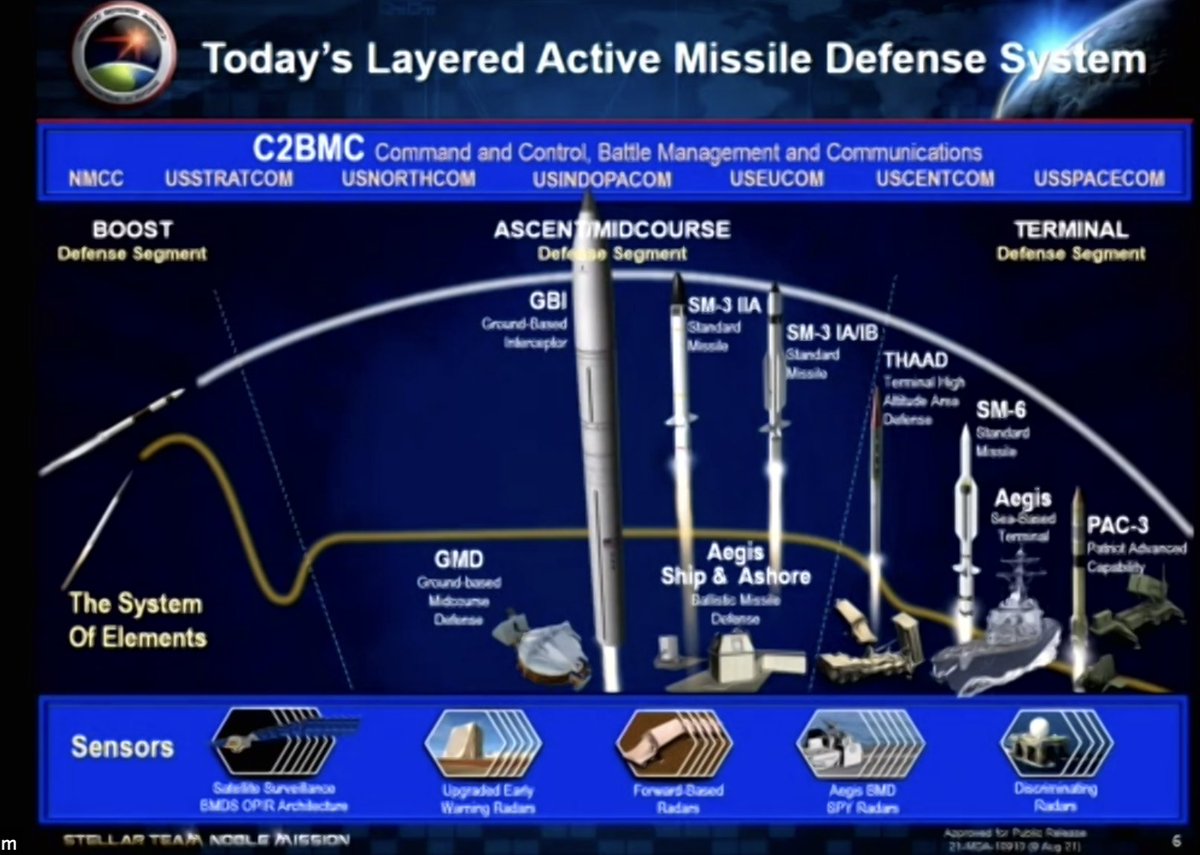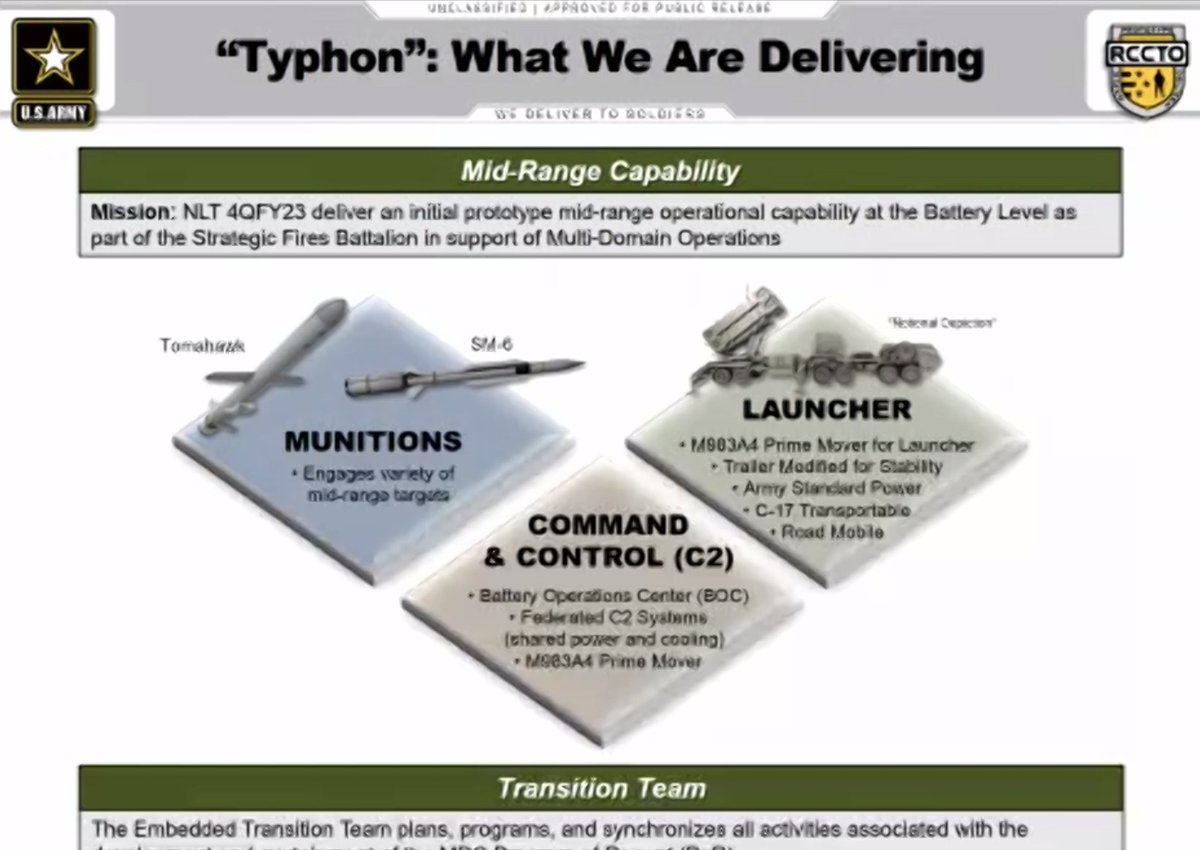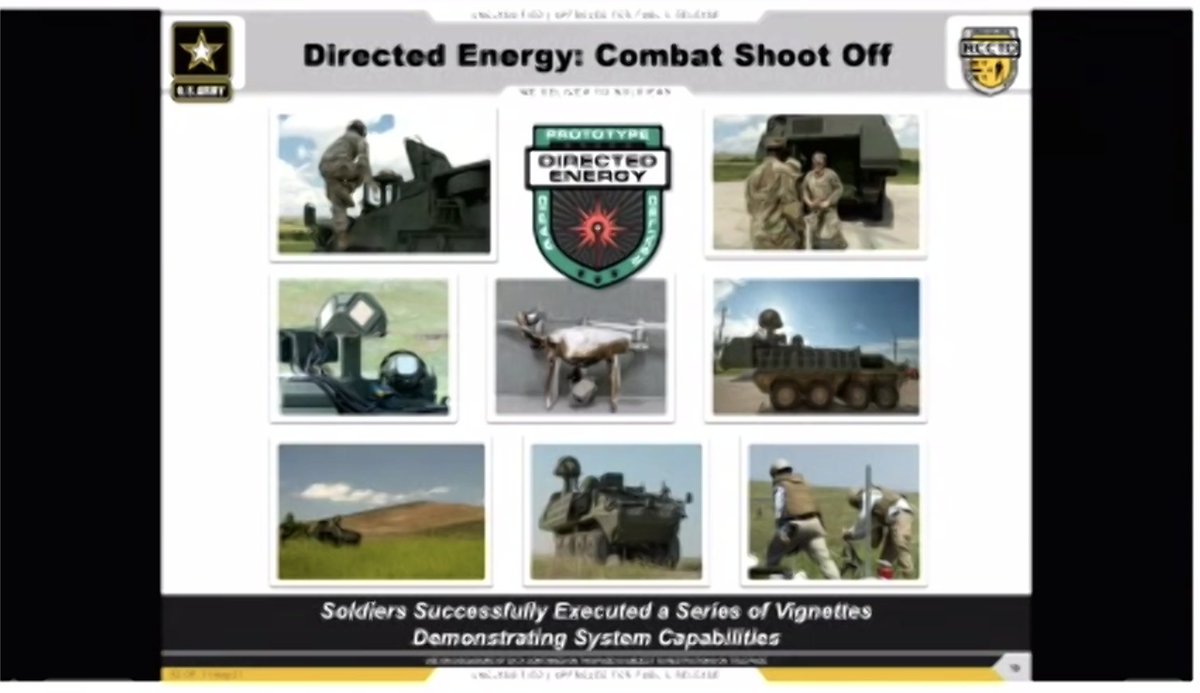
At #SMD2021, Adm. Richard cautions against comparing stockpile sizes, because half of US stockpile "operationally unavailable" due to treaty constraints. Also asks OSINTers to keep looking for Chinese siloes; "I usually have to pay someone to do that"
Richard: China "soon to be the pacing threat in most categories," and Russia "seeking to solidify great power status"—points to Moscow's gray zone actions.
Russia "has over 2,000 non-treaty accountable" tactical nuclear weapons. And "has the capacity to drastically increase" its nuclear stockpile. "Russia has more strategic missile defense than we do; theirs is nuclear-tipped and they're improving it."
STRATCOM head Richard: US in unprecedented position of confronting two peer nuclear competitors who have to be deterred differently.
Richard: US faces "two nuclear capable peers, who wish to change the world order...China and Russia have the unilateral ability to escalate" at all levels, in all domains. But given their military cooperation, it is a "mistake to think of them in isolation of each other"
Richard on the Cuban Missile Crisis: "the many options at Kennedy's disposal allowed him to take incremental risk," while Soviets had "all or nothing." The capacity for incremental options to escalate contributed to US success.
Richard: STRATCOM needs next generation early warning capability, or will have to change force posture to account for that. Notes that forces did so in the past.
Richard: "The scale and the intensity of the strategic environment is changing." Praises DoD concept on integrated deterrence. "China's strategic breakout is a cause for action." "Missile defense is and will remain imperative to our nation's defense."
Minuteman III "cannot match the threat environment forever." "Our legacy systems have little to no margin to do this. I can't deter if I can't get to the target."
Thinks there "are adequate resources available to do integrated deterrence." Quotes Mattis: "we can afford survival." Affirms SecDef's call for closer security ties with allies.
Does economic entanglement with China deter them from attacking us? "Economic entanglement does provide a deterrent effect." Says Sec. Kahl has added entanglement concept to deterrence theory. Says we "need a definition of integrated deterrence" and process ongoing in OSD.
STRATCOM perspective on NGI: Necessary for modernization, and urges industry "to deliver on time and on budget...I was supposed to get 7 new [NC3] systems at IOC this year; I only got 2"
Full quotes: “Just 13 days ago, commercial satellite imagery revealed a tunnel under construction in the region that China historically used as a nuclear weapons testing ground. Serves as a reminder that China has enacted a nuclear weapons testing program.”
“If you enjoy looking at commercial imagery for stuff in China, may I suggest you keep looking. Normally I have to pay people to do it—if you like doing it for free, that just helps and I appreciate that.”
“[China's] continued development and deployment of road-mobile ICBM capability, solid-fueled ICBM siloes, an air leg—the H-6N ALBM nuclear-capable aircraft, 6 second-generation Jin-class ballistic missile submarines, and a lot more…
...you add all this up, and what you get is something that is inconsistent with a minimum deterrence posture”
“You gotta look at what they do, not what they say” “China has figured out that you can’t coerce a peer with a minimum deterrence policy”
On China: “I caution against simple comparison of stockpile sizes. I see that done in the open press all the time. A nation’s nuclear stockpile is a really crude measure of its overall capability...
...You have to consider the delivery systems, accuracy, range, readiness, training, concepts of operations, and many other things to fully understand what a nation is capable of doing.”
“And yes, we have a larger stockpile than China does, for the moment. But almost 2/3rds of what we have is operationally unavailable to me because of treaty constraints. And remember, I have to deter Russia, North Korea, and others all at the same time with what we have.”
“Nuclear weapons remain a foundational aspect to Russia’s strategy and they’ve recapitalized over 80 percent of their strategic nuclear forces, including expanded warhead delivery capacity.”
“They’re the leading nation in the world for hypersonic technology, at least for the moment”
“Don’t forget, they have over 2,000 non-treaty accountable nuclear weapons that can be employed by ships, aircraft, ground forces—and the use of those, the threat of those is a critical element to Russia’s security strategy and its willingness to contemplate first use..."
"Russia may use nuclear weapons to conventional attacks if the state’s existence is threatened. Russia has the capacity to drastically increase its production of nuclear weapons and missiles, through facilities and civil military efforts..."
“Russia, we—this never comes up—Russia has more strategic missile defense than we do; theirs is nuclear-tipped, and they’re improving it”
“And I don’t think our national intellectual capacity has been sufficiently engaged to consider all the ramifications here. Remember, we created the entire RAND Corporation back in the Cold War, to do nothing but think about the two-party problem...
and explore the details of deterrence theory. Now, I just picked RAND as an example, there are others I could use. Some of nation’s greatest minds—Thomas Schelling, Herman Kahn—broke the monopoly of government knowledge on how you do deterrence to create dominant theories...
we used in the cold war and to this day.”
Rewriting deterrence for the 3-nation problem—Russia-China-US “will take a national undertaking” and “we can’t do this alone”
Rewriting deterrence for the 3-nation problem—Russia-China-US “will take a national undertaking” and “we can’t do this alone”
3-nation nuclear crises “quickly becomes less about a correlation of force and who can will the battle, and more becomes an issue of who judges greater stake and is willing to take greater risk in the pursuit of that.”
“Remember that President Kennedy had a range of options that exceeded Khrushchev’s options. Kennedy had the ability to edge closer to the brink. The Soviet Union, in the end, was left with options that included a lot of risks—risks they were not willing to take."
"So put another way, the many options at Kennedy’s disposal allowed taking incremental risks, as opposed to the Soviet Union’s choices, which were kind of close to all or nothing."
"It was the capability, capacity, and willingness to take incremental risks that made the US successful."
• • •
Missing some Tweet in this thread? You can try to
force a refresh












